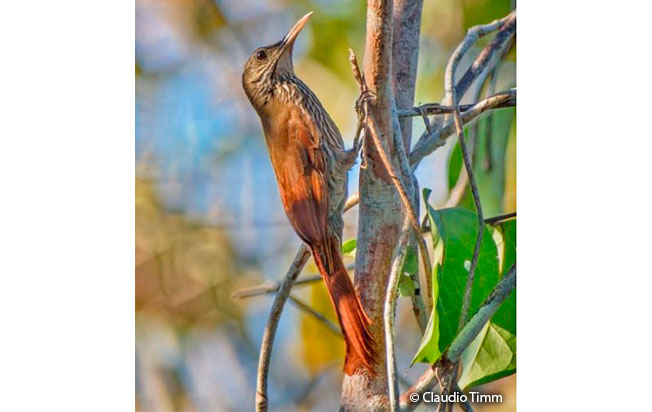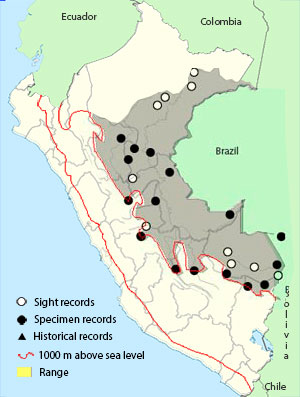Order: Passeriformes | Family: Furnariidae | IUCN Status: Least Concern

Age: Adult | Sex: Unknown | Loc. Manacapuru, Amazonas, Brazil

Age: Adult | Sex: Unknown | Loc. Explore Napo, Loreto

Age: Adult | Sex: Unknown | Loc. Iranduba, Amazonas, Brazil

Age: Adult | Sex: Unknown | Loc. Orellana, Ecuador
Identification & Behavior: ~21 cm (8.2 in). The Duida Woodcreeper has the underparts heavily streaked. The head is faintly streaked. Streaks are light brown feathers of various lengths fringed with dusky brown. The chin and throat are buffy-brown. The bill is relatively long, creamy white, and decurved. It forages in the canopy of the forest in Amazonia, often in the company of mixed-species flocks. Until recently considered conspecific with Inambari Woodcreeper, but they were split on basis of vocal and genetic evidence. Both species occur on opposite sides of the Amazon River. It differs from Inambari Woodcreeper in having roughly half fewer notes in its song.
Status: The Duida Woodcreeper is uncommon and widespread in the Amazonian lowlands on the north side of the Amazon River. It also occurs in Co, Ec, and, Br.
Name in Spanish: Trepador de Duida.
Sub-species: Duida Woodcreeper (Lepidocolaptes duidae), J. T. Zimmer (1934).
Meaning of Name: Lepidocolaptes: Gr. lepis, lepidos= scale, flake and kolaptes, kolapto= pecker to peck. duidae: Named after the Duida Mountains of Venezuela.
Distribution Map

Voice
References: